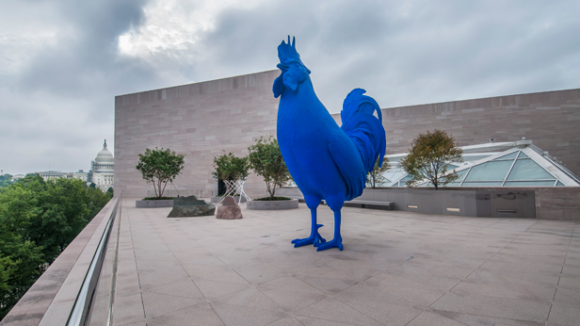
by Moe | Jul 27, 2018 | Meaning of Symbols
In the United States of America, you will find two Giant Blue Cocks.
One Cock is 14 1/2 feet tall and sits atop the National Gallery of Art in Washington, D.C.

The other Blue Cock is over 20 feet tall which can be found in Minneapolis, Minnesota at the Walker Art Centre.
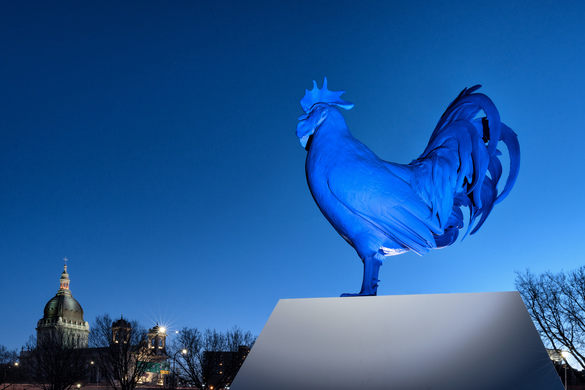
The Blue Cock is by German artist Katerina Fritsch and was dubbed the “Hahn/Cock” which was first unveiled in July 2013 at Trafalgar Square’s Fourth Plinth in London.
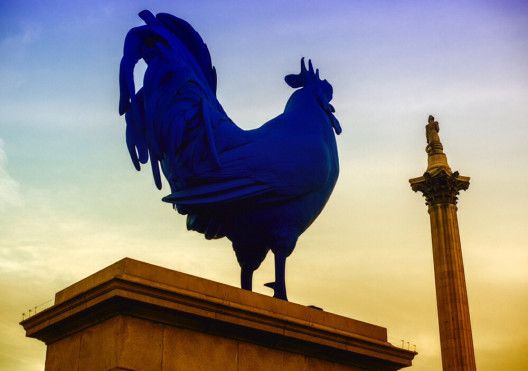
The German word “hahn” means the same as “cock” in English and why I just call it a Giant Royal Blue Cock.
Interestingly, the artist had admitted that it is consciously intended as a play on words.
The sculpture was selected by the Fourth Plinth Commissioning Group. According to a press release issued by the group in which they stated that the Giant Blue Cock is “The sculpture communicates on different levels,” and is a “symbol for regeneration, awakening and strength.”
Here is a quote from the original press release.
“First of all is the consideration of the formal aspect of its placement: the mostly grey architecture of Trafalgar Square would receive an unexpectedly strong colour accentuation, the size and colour of the animal making the whole situation surreal or simply unusual.
The cockerel is also a symbol for regeneration, awakening and strength and finally, the work refers, in an ironic way, to male-defined British society and thoughts about biological determinism.”
Let me add that Trafalgar Square is also a historical landmark being the very place in which the Brittish had commemorated their famous victory over the French. The Square has also been used for community gatherings and political demonstrations, including Bloody Sunday, the first Aldermaston March, anti-war protests, and campaigns against climate change.
After the Giant Blue Cock was unveiled, the Mayor of London, Boris Johnson pointed out the irony that the cockerel, an unofficial national emblem of France, was standing in a square commemorating a famous British victory over the French.
Johnson said in his speech that “I hope French people will not take it as excessive British chauvinism – but for me it stands for the recent British triumph in the Tour de France, which we have won twice in a row … it is a symbol of French sporting pride, brought like a chicken to London. We have mounted this French cock at the heart of our imperial square.
The artist, Fritsch said that she was unaware of the connection until it was explained to her.
Fritsch said she chose the cockerel to represent strength and regeneration, “but it’s a nice humorous side-effect to have something French in a place that celebrates victory over Napoleon.
She concluded, “He has come back as a cockerel!”
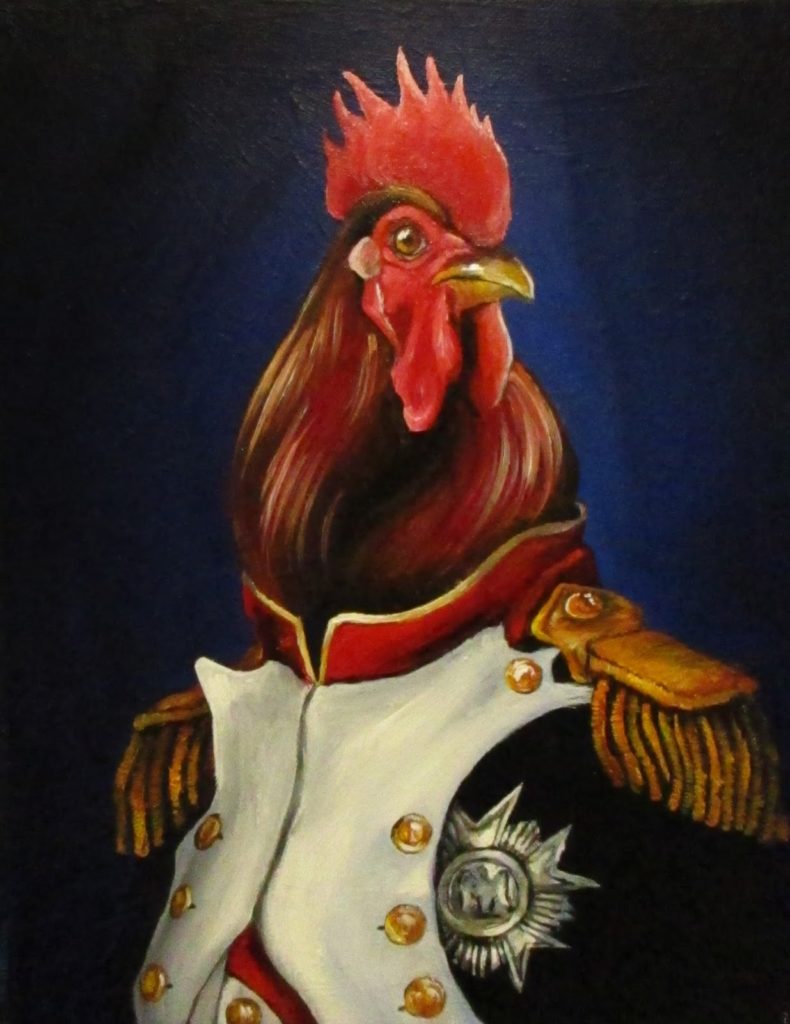
Moe is the founder of GnosticWarrior.com. He is a father, husband, author, martial arts black belt, and an expert in Gnosticism, the occult, and esotericism.
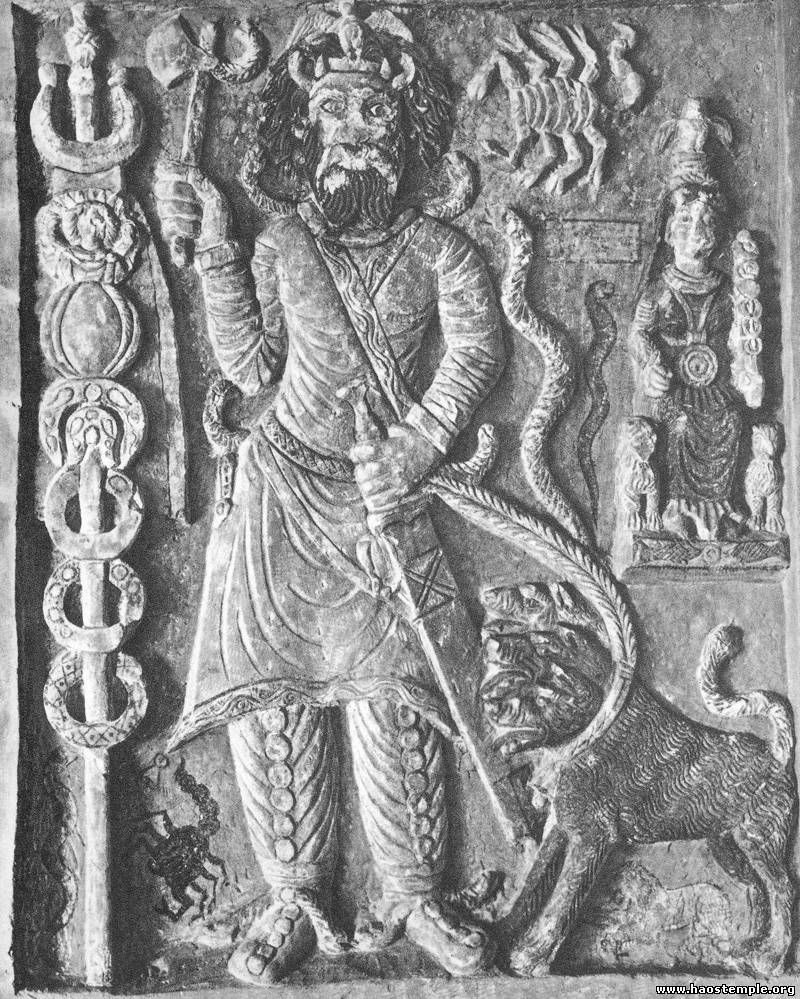
by Moe | Jul 26, 2018 | Gods & Goddesses, Mystical Christianity
Nergal is the Hero God of War and the Underworld – ie: Babylonia, Earth, Hell, Land of the Dead and what we can just call today – Modernity.
Nergal had presided over the affairs of humans as one of the agents of punishment with his main instruments being that of magick, war, and pestilence. He was also King of the Spirits of the Air who was almost always accompanied by his female consort Ereskigal and many warrior demons as his legions.
The God Nergal was said to be an Idol of the Samaritan Hebrews who we also know under the names of the Kush, Cuthah, Cuthites, Cushite, and Cutheans. Nergal is mentioned in 2 Kings xvii, and the Babylonian Talmudic treatise Sanhedrin (fol. 63, p. 2) which states that the men of Kuth made Nergal their god.
“And what was it? A cock.”
Based on these historical descriptions, we know that Nergal was said to be worshipped in the form of a Cock (Rooster), or a man with the head of a Cock. But he is also found depicted as a “Man-Lion” with the body of a man and head of a lion.
In one of the oldest depictions of Nergal, we also see the symbols like the horns on his head, scorpion, battle ax, Great Mother and the Hellhound Cerberus – the three-headed ‘Demon-Dog’.
The rites of the Scorpion are the Mysteries of the Apocalypse.
Here is an ancient relief carving of Nergal dating to approximately the first or second century AD.

The immortal Idols used to represent Nergal, the Cock (Rooster) and a man with a Lion’s Head are actually two of the most important symbols that you will find in all of history.
These same said symbols are also prominently symbolized in the Abrahamic religions of the exoteric world and also the esoteric being that of Ancient Gnosticism which gave rise to modern Freemasonry. For example, we have Yaldabaoth who in Nag Hammadi is described as the Chief Archon created by the Goddess Sophia in the “form of a lion-faced serpent, with its eyes were like lightning fires which flash.
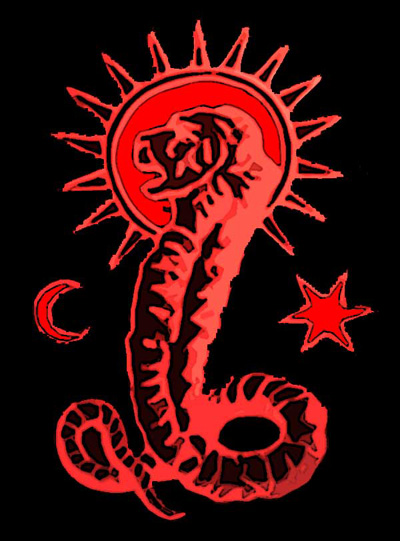
Let me remind some of you Christians that our Lord was also symbolized as a Cock in the Scripture or I should say the “Holy Cock.” As I had written before, the English word cock or rooster in Latin is gallus or gallinaceous which refers to a “rooster or cockerel” (male chicken) and the term gallīna is used for a “hen” (female chicken).
This is why one of the surnames for Jesus was “Jesus the Galilean from Gallillee” and his Apostles like Simon was also surnamed “Peter the Galilean.”
Also, let us not forget the chief symbol for the Tribe of the Lord – Judah is the lion.
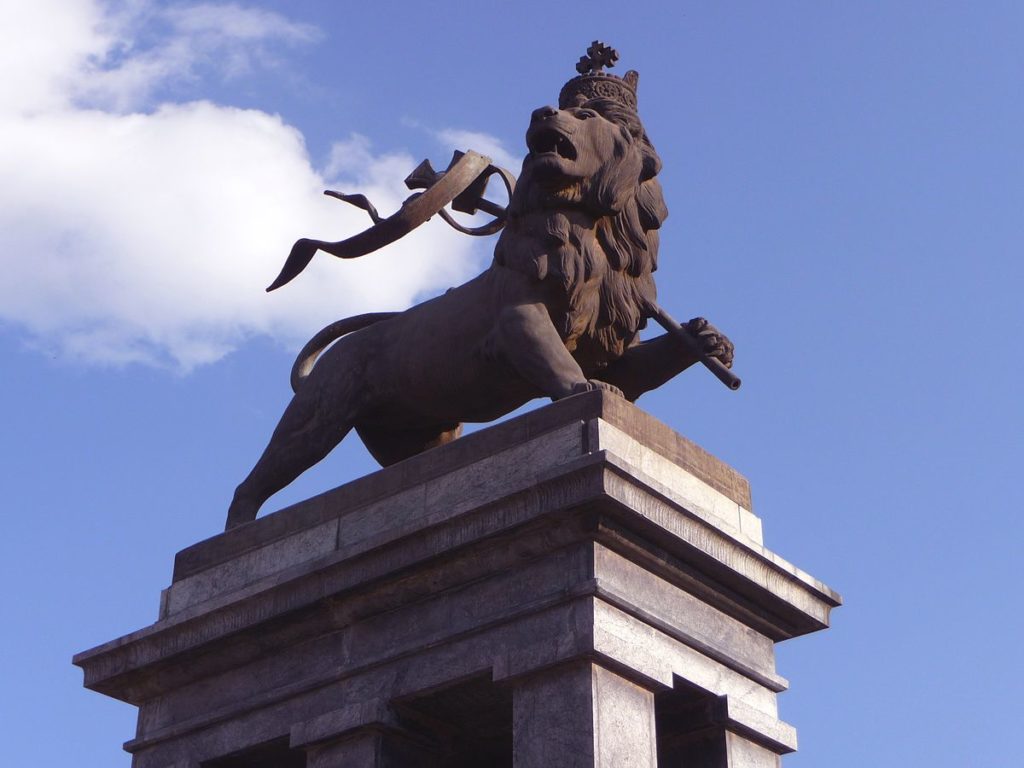
This is may be why Jesus is surnamed the Galilean (Cock/Rooster) from Gallillee (River Galli) and the Prince of the Apostles like Simon the Samaritan who was surnamed Peter was a Galilean as well. (Matthew 26:69; John 7:41)
WHO WAS THE GOD NERGAL
As I have mentioned many times before on the Gnostic Warrior, mythology and theology go hand and hand and wherever this priesthood of the Holy Cock had traveled, they often left their immortal marks for their descendants to break the Seal in order to follow the path to their true origins.
This may be why we find the God Nergal (Ner-gal, Nirgal, or Nirgali) in the Bible as the deity of the city of Cuth (Cuthah):
“And the men of Babylon made Succothbenoth, and the men of Cuth made Nergal, and the men of Hamath made Ashima”(2 Kings 17:30); is said to be the father of Kush (Kish) (1 Chronicles 8:33). 1 Samuel 14:51 should be read, “Kish, the father of Saul, and Ner, the father of Abner, were the sons of Abiel.” And hence this Kish and Ner were brothers, and Saul and Abner were first cousins (Comp. 1 Chronicles 9:36)
The chief seats of Nergal’s worship were said to be in the ancient cities of Cutha and Tarbissa. Cutha was the sacred city where he was said to “live,” and where in ancient times you could find his famous shrine. The “men of Cuth,” when transported as colonists to Samaria then became known Biblically by names such as the Babylonians, Samaritans and Levites.
In some historical Babylonian accounts, their main temple was said to be Mount Gerizim, opposite the Temple in Jerusalem, where they were said to worship a God called ‘Nergal.’ The Father of English History and Doctor of the Church, Saint Bede says that in the Book of Places we read that “Benoth and Nergal were cities built in the region of Judea by Samaritans” who had migrated from Babylon.
It interesting that Bede says that Nergal was a city built near the region of Judea because, in my own research and as I have mentioned many, many times in the past, I have discovered that the city for the Old Judea was on the ancient Holy Island of Crete at the foot of Mount Ida.
This is the same location where the ancient myths of the Great Cretan Mother who we know by names such as Cybele, Magna Mater and Rhea had entrusted a “special priesthood” with the care of the infant God – Zeus who was hidden in a cave on Mount Ida from his vengeful father Cronus. It was at Mount Ida -AKA Judah where she had placed him in the care of a priesthood known under various names such as the Curetes, Telchnines, Corybantes, Dactyls, and Cabiri.
The first-century Roman-Jewish historian, Josephus verifies this fact when he says the tribe of the Jud or the Judeans (Idumean) of Mount Ida. Today they would be known as the Judeans or the Tribe of Judah – The Tribe of Our Lord.
This is why we find the Samaritan Levites at Mount Ida which would also most likely be the same place where the famous Levite priest lawgiver – Moses received the books of the Law from God on Mount Sinai. After all, it was on Crete where some of the most famous lawgivers in all history such as Epimenides Gnosis and King Minos had spawned so naturally, Moses would have also received the “New Laws” at Mount Ida on Crete.
We could safely say that the Samaritan Levites would be the defacto legal protectors placed in charge of our Lord in this 6th Age.
An age that may end when the last legal priesthoods for our Lord are instituted and ALL the pretenders are abolished and or destroyed.
All these ancient stories come down to us from the same Mount Ida priesthood whom I believe were the seeds for the Tribe we know as the “Samaritan Levites.” Like the Curetes, Telchnines, Corybantes, Dactyls, and Cabiri, this Ancient Priesthood for the Lord were assigned to guard and watch over the Ark of the Covenant.
Nergal (Nirgal, or Nirgali) and who is known as a Ner in the Scripture was the Ancient Patriarch and Father to this Tribe.
In the etymology of Nergal, we find that it is a compound word composed of the two words Ner and Gal. The meaning of Ner is a candle, lamp, and or light. Gal, as I mentioned before comes from the Latin gallus or gallinaceous which refers to a “rooster or cockerel” (male chicken) and the term gallīna is used for a “hen” (female chicken).
Ner-Gal was also the progeny (pro-geni) of who we know as our Lord in the West – Jesus the Galilean from the River Galilee and his 12 Apostlistic Galileans including Simon the Samaritan who we also know under the additional Biblical surnames as St. Peter – AKA The First Gnostic and when he became an Apostate of the Faith from which he was Christened, he then became Satan – The Lord’s Left Hand Man and Protector.
The God of this 6th Age……
Moe is the founder of GnosticWarrior.com. He is a father, husband, author, martial arts black belt, and an expert in Gnosticism, the occult, and esotericism.
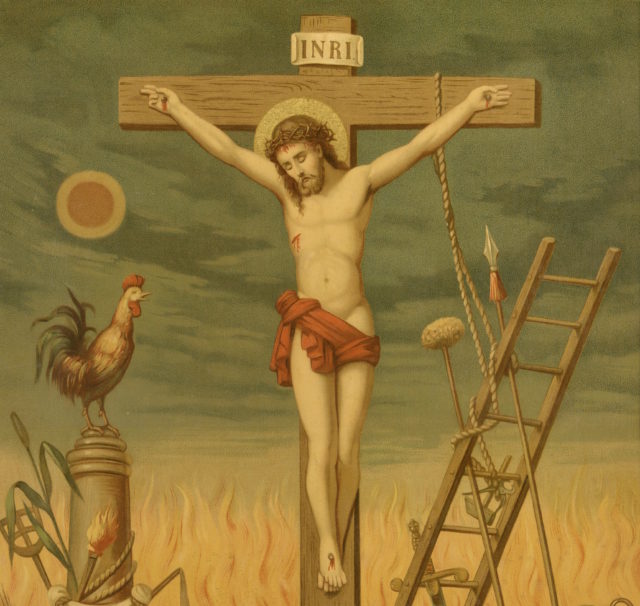
by Moe | Jul 18, 2018 | Mystical Christianity
The Galilee region was said to be the home of Jesus during at least 30 years of his life. Galilee was home to a people called the “Galatians or Galileans.” This is also the same place in the Scripture where St. Paul wrote a famous letter addressing “to the churches of Galatia” (Galatians 1:2).
He had visited there when he was sick in order to be healed and he calls all citizens of the province of ‘Galatia’ by the name ‘Galatians’ which can be considered at the time as being honorable. In the Acts of the Apostles, Paul says he is traveling to the “region of Galatia and Phrygia“, which lies immediately west of Galatia. (more…)
Moe is the founder of GnosticWarrior.com. He is a father, husband, author, martial arts black belt, and an expert in Gnosticism, the occult, and esotericism.
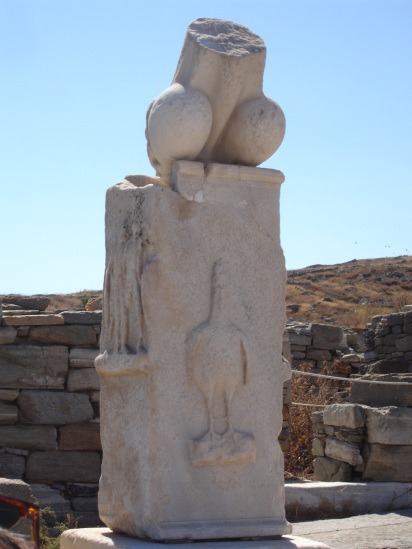
by Moe | Jul 16, 2018 | Mystical Christianity
In satirizing the priestly functions of the High Priest of the Ancient Christian Mysteries, the 2nd century Greek Hellene Satirist, Lucian of Samosta had said, “A holy cock, a divine cock, a genius in the form of a cock, in short, a mysterious and supernatural cock, produced a very different effect in such a performance, on such an occasion, from what a mere natural cock could have done!”
Lucian was ignorantly making fun of the “Holy, Sacred or Divine Cock” which was sanctified since the beginning of Civilization by the Priesthood as the Chief (Supreme/Head) Priest to be in charge of the Temple. Today in the Roman Catholic Church, the Holy Cock is styled “Peter” and we Catholics know him as our first Pope. Then it should be no surprise to you that in the English language, the word cock and Peter is slang for penis.
But let it be said once and for all, that not everyone who has a Peter or is named Peter has a Holy Cock!
 (more…)
(more…)
Moe is the founder of GnosticWarrior.com. He is a father, husband, author, martial arts black belt, and an expert in Gnosticism, the occult, and esotericism.
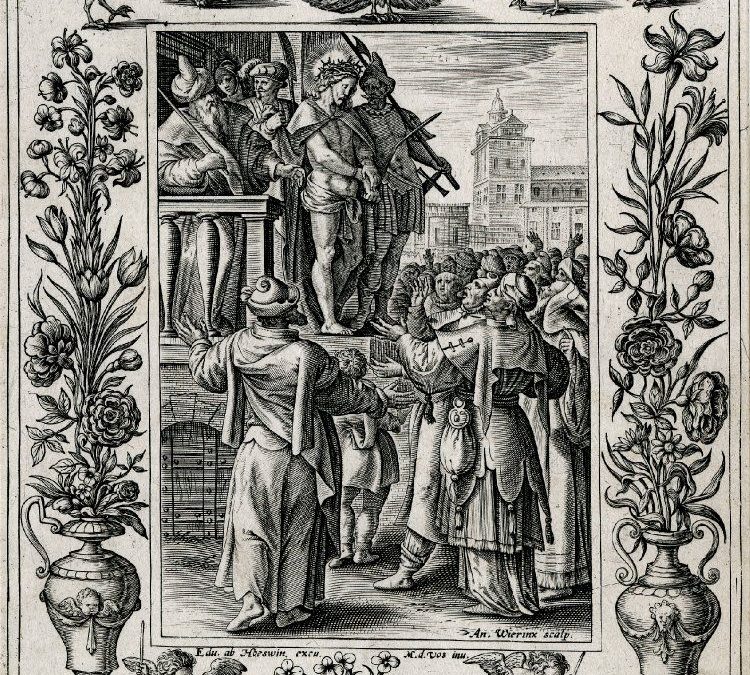
by Moe | Jul 11, 2018 | Mystical Christianity
Kepha (Kefa, Kepha, Cepha, Hepha) was the city where the Lord Jesus was judged by the Doctors of the Law of Israel ie: The Priesthood of Kepha and condemned to death. In the Scripture, the city of Kepha was said to be separated from the city known as Acco, or Ptolemais, by a large and beautiful harbor. To travel by sea from Acco to Kepha was approximately fifteen miles but by land the distance is double.
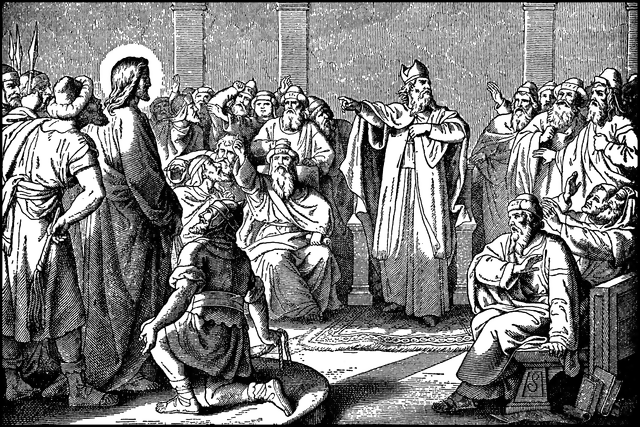
The word Kepha means “the head,” but also denote esoterically in religion as, “Ruler, Lord or a Cornerstone (Masonic), uniting two walls.” There are many alternate spellings of the word such as Cepha, Cephas, and most commonly in Scripture as ‘Caiphas.’
You will find many priests at this time who had taken the name of Kephas, Cephas and or Caiphas. For example, as I explained in my article, Simon (Saint Peter): Kepha of the Church and The Kepha (Head Priest) Holds the Keys to Heaven and Hell, Simon AKA Saint Peter is given a special “code name” by Jesus when he says, “Thou art Shemeun, (Simon,) the son of Jona (John): thou shalt be called Kepha.” (John 1:42)
Kepha AKA Simon (Saint Peter) was succeeded by five sons and this son-in-law (Jos., “Ant.,” 18, 2, If.; 20, 9, 1.) The family were all Sadducees (Jos., Talmud), and were especially adversarial to the Pharisees. Crete and the name of “Kephala” connect to the biblical history of the High Priests of Isreal known as the Kepha, Simon (Saint Peter) who was also known as “Simon Kephas” and Jesus who was a “member of this Brotherhood.”
According to Josephus, he was also called Caiaphas” and was made high priest (18–36 C.E.) at the time of Jesus’ activity and crucifixion by the Procurator Valerius Gratus (18 A.D.) and that he was removed by the Procurator Vitellius (36 A.D.). His successor was “Jonathan the son of Ananus,”(Annas of the NT) (Antiq. XVIII. ii. 2; iv. 3) .
Historical sources prove the influential priestly background of Joseph Caiaphas who was the son-in-law of Anan – son of Seth, a powerful and important priestly family in Jerusalem (John 18:13); the Mishnah (Par. 3:5) speaks of a high priest named Elioeneiai (*Elionaeus) ha-Kayyaf (ha-Kof), who some say may have been a son of Joseph Caiaphas.
Please keep in mind that Joseph Caiaphas is the same person we know as the Roman-Jewish Historian, Josephus AKA Titus Flavius Josephus born Yosef ben Matityahu who initially fought against the Romans during the First Jewish–Roman War as head of Jewish forces in Galilee.
Therefore, we can say that the Caiphas High Priest and his Brethren of Israel were the true the Doctors of the Law at the time. These hereditary High Priests and Doctors of the Law had ruled from what is known biblically as the “Palace or House/Hall of Kephas (Caiphas).” This was the place where the High Priest of Israel resided, and it was here that Jesus was tried by the Sanhedrin.
An important to note that Simon Kepha – AKA Saint Peter had denied Jesus in one of the courts of the Palace or House of Kephas which was the exact place as mentioned by St. Mark as the two cock-crowings (chap. xiv. 72), thus increasing the guilt of Peter’s denial.
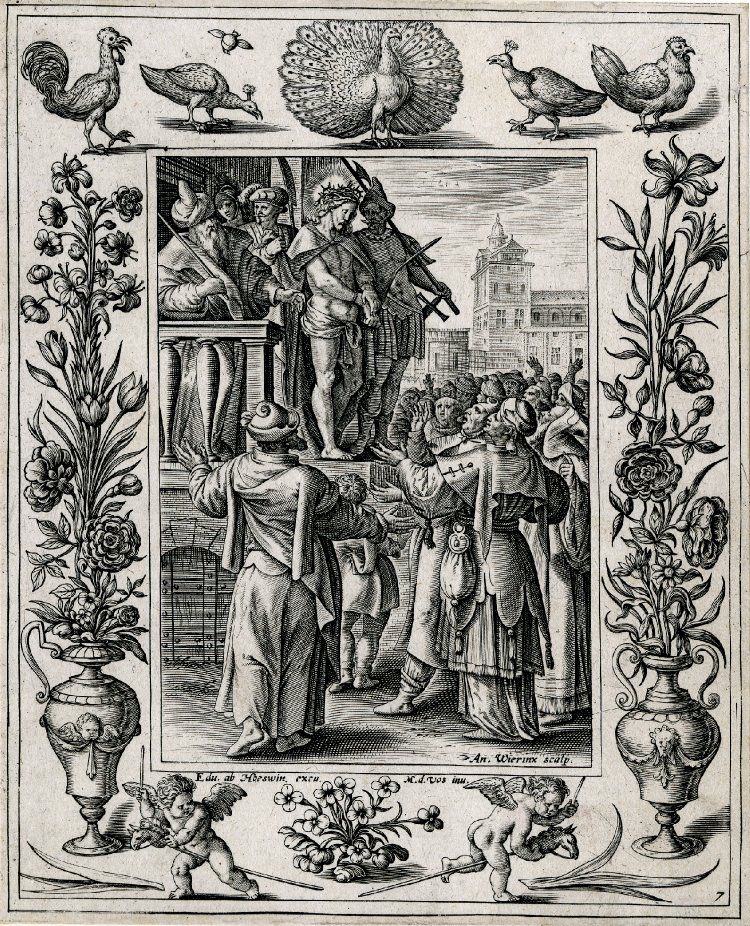
As I had written in a previous article, The Kepha (Head Priest) Holds the Keys to Heaven and Hell, this location has been verified by science and history given the fact that on the ancient Holy Island of Crete sits the Temple of Knossos (AKA Gnosis) at the bottom of a hill that was once called “Kephala.” (AKA Kephala tou Tselevi)
This is also the exact location where archeologists have found “Kephala Tholos Tomb”, which sits north of the palace of Knossos. This was where King Kephalos (Cephalus) of Crete had ruled over the “Villages of Kephalos,” from the steep and lofty headland of Kephalos.
I would like to point out that this name of Kephala tou Tselevi is also an Apocalyptic clue to the historical and biblical origins of these hereditary Israelite High Priests and Doctors of the Law.
The name Kephala means Head, tou may signify king but in the Hebrew/Modern Phoenician, the equivalent is ta’ah which mostly means “deceived, leads them astray, leads to ruin, misled and or went astray.” We find the meaning of Tselevi points to the name of their biblical priesthood – The Levites which corresponds to the “specific roles and legal rites” they were given by Rome under the rules of both Julius and Agustus Caesars.
This is precisely why in the Scripture, the headland or hill of Kephalos was also known as the Mount of Tombs and is called by the Christians, “The Hill of Evil Counsel.” The place where it is said that the princes, priests, scribes and the elders of the law had conspired to arrest Jesus. As it is said in Matthew 26:3-5, “that by subtlety they might apprehend Jesus“, was held in the house of Caiphas.
The Tosefta which is said to be a compilation of the Jewish oral law mentions the House of Kaipha (AKA the Judgment Hall of Caiaphas) as a high-priestly family.(Yev. 1:10) The hill south of Jerusalem where this house is said by tradition to have stood is called the “Hill of Evil Counsel”.
This is why I believe that it was also called Kephala tou Tselevi for these were the same Levite priests who were the first High Priest of the Israelites with Aaron and his brother Moses who could be called the founders of the Levite Priesthood. Joseph was both a Levite Prince and the High Priest with the Coat of Many Colors.
Moe is the founder of GnosticWarrior.com. He is a father, husband, author, martial arts black belt, and an expert in Gnosticism, the occult, and esotericism.














